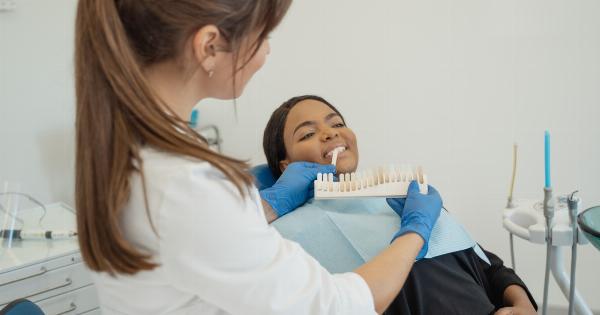Retinal detachment is a serious eye condition that occurs when the retina, the thin layer of tissue at the back of the eye, separates from its normal position.
This detachment can lead to a loss of vision and, if left untreated, can even cause permanent blindness.
Causes of Retinal Detachment
There are several factors that can increase the risk of retinal detachment. These include:.
- Age: Retinal detachment is more common in individuals over the age of 40.
- Eye Injury: Any trauma or injury to the eye can cause the retina to detach.
- Family History: People with a family history of retinal detachment are more likely to develop the condition.
- Previous Retinal Detachment: If an individual has already experienced a retinal detachment in one eye, they are at a higher risk of developing it in the other eye.
- Weak Retinal Areas: Some people are born with thin or weak areas in their retinas, making them more susceptible to detachment.
- Other Eye Conditions: Certain eye conditions such as lattice degeneration, retinoschisis, or diabetic retinopathy can increase the risk of retinal detachment.
Symptoms of Retinal Detachment
Retinal detachment can cause various symptoms that should not be ignored. Some of the common signs include:.
- Floaters: The sudden appearance of spots or specks floating in your field of vision.
- Flashes of Light: Seeing flashes of light, similar to lightning strikes, often in the peripheral vision.
- Blurred Vision: Experiencing blurred or distorted vision that does not improve.
- Shadow or Curtain: Noticing the presence of a shadow or a curtain-like veil across your visual field.
- Loss of Peripheral Vision: Gradually losing peripheral vision, often starting from one side.
Diagnosing Retinal Detachment
If you experience any of the above symptoms, it is crucial to seek immediate medical attention. An ophthalmologist will perform a comprehensive eye examination to diagnose retinal detachment. The examination may include:.
- Visual Acuity Test: To assess the sharpness and clarity of your vision.
- Retinal Examination: Through a dilated pupil, the doctor will examine the retina and look for signs of detachment.
- Ultrasound: In some cases, an ultrasound of the eye may be performed to confirm the diagnosis.
Treatment Options for Retinal Detachment
The treatment for retinal detachment depends on the severity and location of the detachment. The main goal of treatment is to reattach the retina and restore vision if possible. The commonly used treatment options include:.
- Scleral Buckle Surgery: This surgery involves attaching a silicone band around the eyeball to support the detached retina.
- Vitrectomy: In this procedure, the vitreous gel inside the eye is removed and replaced with a gas or silicone oil bubble to push the retina back into place.
- Laser Surgery: Laser surgery is used to create scars around the retinal tears or holes, sealing them and preventing further detachment.
Recovery and Post-Treatment Care
Following retinal detachment surgery, it is essential to take proper care and follow the doctor’s instructions for a successful recovery. Some common post-treatment care measures include:.
- Using Eye Drops: Prescribed eye drops should be used as directed to prevent infection and promote healing.
- Avoiding Strenuous Activities: Heavy lifting, bending over, and any activities that increase eye pressure should be avoided.
- Protective Shield: Wearing an eye patch or shield during sleep or as advised by the doctor can protect the eye during the healing process.
- Regular Follow-ups: It is crucial to attend all follow-up appointments to monitor the progress of healing and ensure there are no complications.
Prevention and Early Detection
While it may not be possible to prevent all cases of retinal detachment, there are certain measures you can take to reduce the risk:.
- Regular Eye Exams: Routine eye examinations can help detect any early signs of retinal detachment or other eye conditions.
- Protecting Your Eyes: Wear protective eyewear during activities that could lead to eye injury.
- Knowing the Symptoms: Be aware of the symptoms of retinal detachment and seek immediate medical attention if any of them occur.
- Managing Other Eye Conditions: If you have any underlying eye conditions, work closely with your eye care specialist to manage and treat them effectively.
Conclusion
Retinal detachment is a serious eye condition that requires prompt medical attention.
Understanding the causes, recognizing the symptoms, and seeking immediate treatment can significantly improve the chances of successful reattachment and vision restoration. It is crucial to prioritize regular eye examinations and take proactive measures to protect your eyes from injury or complications. Early detection and intervention play a vital role in preserving your eyesight and preventing irreversible vision loss.



























